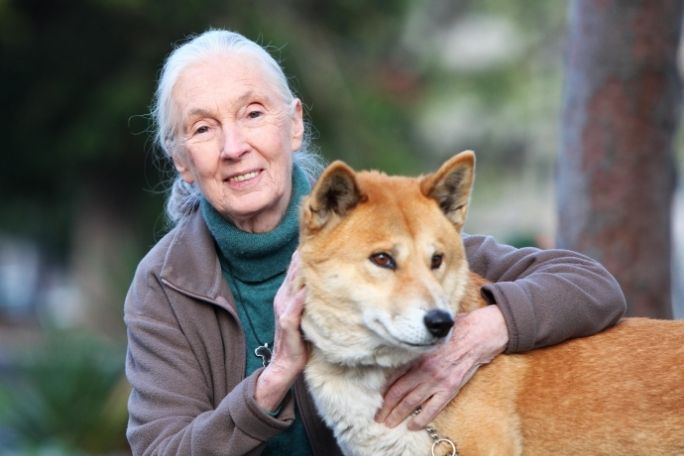Lesson summary
In this lesson, students will explore what it means to be a compassionate leader and the skills and traits compassionate leaders have. Students will work collaboratively to research, create and present a slideshow to the class about an inspirational leader from Australia or from around the world. They will also have the opportunity to reflect on their own leadership skills and traits.
Learning intentions:
Students will...
- identify skills and traits of compassionate leaders
- identify and reflect on their own leadership skills and traits
Success criteria:
Students can...
- explain what it means to be a leader
- describe the skills and traits of a compassionate leader
- identify the skills and traits of compassionate leaders in real world examples
- reflect on their own leadership skills and traits
Lesson guides and printables
Curriculum links
Select your curriculum from the options below.
Lesson details
Curriculum mapping
Australian curriculum content descriptions:
Year 3 HASS:
- Sequence information about people’s lives and events (ACHASSI055)
- Draw simple conclusions based on analysis of information and data (ACHASSI058)
- Interact with others with respect to share points of view (ACHASSI059)
- Why people participate within communities and how students can actively participate and contribute (ACHASSK072)
Year 4 HASS:
- Sequence information about people’s lives and events (ACHASSI076)
- Draw simple conclusions based on analysis of information and data (ACHASSI079)
- Interact with others with respect to share points of view (ACHASSI080)
- The importance of environments, including natural vegetation, to animals and people (ACHASSK088)
- The different cultural, religious and/or social groups to which they and others in the community belong (ACHASSK093)
Year 5 HASS:
- Sequence information about people’s lives, events, developments and phenomena using a variety of methods including timelines (ACHASSI097)
- Evaluate evidence to draw conclusions (ACHASSI10)
Year 6 HASS:
- Sequence information about people’s lives, events, developments and phenomena using a variety of methods including timelines (ACHASSI125)
Evaluate evidence to draw conclusions (ACHASSI129)
Use criteria to make decisions and judgements and consider advantages and disadvantages of preferring one decision over others (ACHASSI131)
NESA and VCAA: Click here for NESA and VCAA curriculum links for this lesson
General capabilities: Literacy, Critical and Creative Thinking, Personal and Social Capability, Ethical Understanding
Cross-curriculum priority: Sustainability
Relevant parts of HASS achievement standards:
Year 3 – Students identify individuals, events and aspects of the past that have significance in the present. They explain how and why people participate in and contribute to their communities.
Year 4 – Students recognise the significance of events in bringing about change and the importance of the environment. They share their points of view, respecting the views of others. Students sequence information about events and the lives of individuals in chronological order with reference to key dates.
Year 5 – Students describe the significance of people and events/developments in bringing about change. They describe the experiences of different people in the past. They identify and describe the interconnections between people and the human and environmental characteristics of places, and between components of environments. They identify the effects of these interconnections on the characteristics of places and environments.
Year 6 – Students sequence information about events, the lives of individuals and selected phenomena in chronological order. By the end of Year 6, students explain the significance of an event/development, an individual and/or group. They describe how people, places, communities and environments are diverse and globally interconnected.
Unit of work: Roots and Shoots – Upper Primary
Time required: 110+ mins
Level of teacher scaffolding: Medium – support students who have difficulty working in groups and/or find independent research challenging
Resources required
- Device with internet access capable of displaying video to the class
- Student Worksheets – one copy per student
- Sticky notes
- Devices capable of searching the internet and developing slideshows (one per student)
- Great Leaders Worksheet (one per student)
- Compassionate Leader Factsheet x 6 – one of each leader
Skills
- Collaboration
- Communication
- Community engagement
- Critical thinking
- Cultural understanding
- Empathy
- Enterprise
- Ethical understanding
- Digital literacy
- Initiative
- Leadership
- Social skills
- Problem solving
Additional info
This lesson has been developed in partnership with Jane Goodall’s Roots & Shoots program. Roots & Shoots is a global youth-led program of young people taking action to improve our world. By participating in this lesson, you and your students will be joining thousands of young people and teachers working to make positive change in our world.


Welcome back!
Don't have an account yet?
Log in with:
Create your free Cool.org account.
Many of our resources are free, with an option to upgrade to Cool+ for premium content.
Already have an account?
Sign up with:
By signing up you accept Cool.org's Terms and Conditions(Opens in new tab) and Privacy Policy(Opens in new tab).